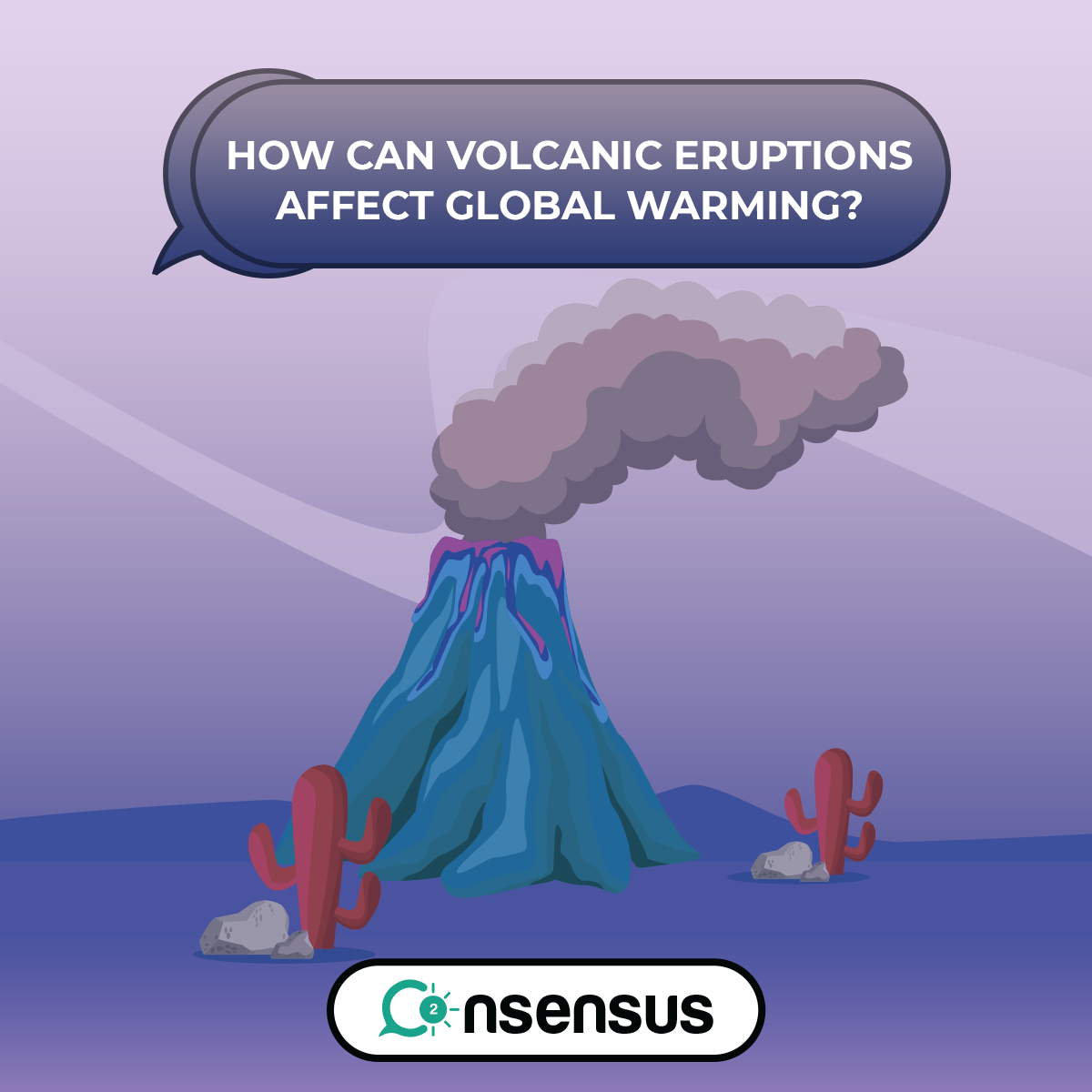According to scientists, a change in climate made by global warming ultimately means that an alteration is occurring on a geological level as well.
It is widely known that volcanic eruptions of a big magnitude can have a direct impact on climate. As a volcano erupts, it will reduce the solar radiation that the earth’s surface receives, while also decreasing the temperatures in the troposphere, which is where the weather manifests itself. The troposphere is also the part of the eath where clouds are found. It is also the lowest layer of the earth’s atmosphere.
When a volcano has a large activity the consequences of its eruption can be felt throughout the years, as they release gases and ash that could possibly altern climate patterns.
What Do Volcanoes Release to the Atmosphere?
They release sulfuric gases which in turn convert to something called sulfate aerosols which lasts for a long period of time. Also, when there are volcanic aerosols forming clouds they absorb terrestrial radiation and blur the incoming radiation that comes from the sun, in a process that is called volcanic forcing.
Usually, there is a massive volcanic eruption once every 20 years, and they tend to alter the earth’s climate by releasing an impressive amount of particles and other gases.
What Happens When a Volcano Erupts?
A volcano erupts when they are ready to release molten rock (often referred to as lava) that comes from within the Earth. An eruption not only affects the atmosphere and the earth alike, but they also create new rocks on the earth’s surface.
Most of the particles that are released from volcanos help the planet to cool down. This happens through a process where solar radiation is being shaded by the clouds that were generated by the volcano. This cooling effect can last weeks, months or even years as it all depends on the size of the volcano and the characteristics of the eruption.
What Happens to the Atmosphere When a Volcano Erupts?
Particles of dust and ash are released to the atmosphere. They usually have a blocking effect on sunlight and sometimes they can even help the planet to temporarily cool down. Once these particles are ready to fall out of the atmosphere they start descending through the rain, which usually occurs within a few hours or days after the eruption.
Another thing that could occur is that volcanos that have erupted emit sulfur dioxide into the atmosphere. Sulfur dioxide helps the climate to cool down as well, and once it moves to the stratosphere (which is the second layer of the earth and where different temperatures can be found) and in combination with water they form sulfuric acid aerosols which, in turn, helps incoming solar radiation to be reflected, which also causes a cooling effect on the earth.
And then, there is also a released of the greenhouse gases into the atmosphere, such as vapour, carbon dioxide and water. Throughout the history of the planet, when the volcanos have been more active than what they usually are nowadays, the number of greenhouse gases that were released were greater, thus they obliged the planet to alter its temperature.
Differences Between the Eruptions
Many people are not aware of the differences between the eruptions and how each volcano is unique. When a volcano becomes active in a tropical region, then they could release sulfate aerosols that will circulate in the stratosphere, thus affecting climate.
However, when a volcano that is found in midlatitude or even polar regions become active, then they sulfate aerosols they release will stay within the middle and high latitudes of the hemisphere they find themselves in.
Evidence has shown that tropical eruptions of volcanos have the most effects on climate than the volcanos that erupt towards the poles.
Volcanos and Global Warming
It is fair to say that volcanos are one of the reasons behind global warming as they have released greenhouse gases into the atmosphere every time there have been continuous amounts of volcanos’ activity.
In other words, when a volcano explodes, a volcano has the potential to send incredible amounts of sulfate aerosols into the stratosphere, which in turn, will fluctuate its temperature since it’s receiving an output of sulfate. And, as a consequence, the change that happens on the stratosphere could have a direct link to global warming, as the gases that have been released by the volcano will last for a couple of years on the earth’s layer.
In addition, even though fossil fuels and volcanos could possibly explain nearly all of the changes within the climate of the earth and therefore could also be the reason behind global warming, there are still ways in which this negative change could be halted, especially if all individuals do their own bit by decreasing the amount of rubbish they generate or the number of fossil fuels that they rely on.
And even though volcanos and their eruptions are part of a natural cycle of the earth, they have also been affected by the indiscriminate changes that global warming has brought to the earth.
For example, scientists have studied the thousands of volcanic eruptions, and what they have realized is that volcanic eruptions tend to increase worldwide as soon as glaciers start to melt.
Even though scientists do not fully comprehend how volcanos are weakened by glaciers, they seem to agree that when a glacier expands then this ice that is created puts pressure on the earth’s surface.
And on the contrary, when glaciers retreat and they move around, this pressure is lifted thus it gives room for volcanos to start their eruptions, as there is no longer a pressure that holds the volcano together, sort of speak.
Leading a more healthy lifestyle is possible, especially since everything is connected and if each action has a direct consequence that could be seen as positive or negative. A consciousness of the earth must be installed in our minds in order to heal this planet.
